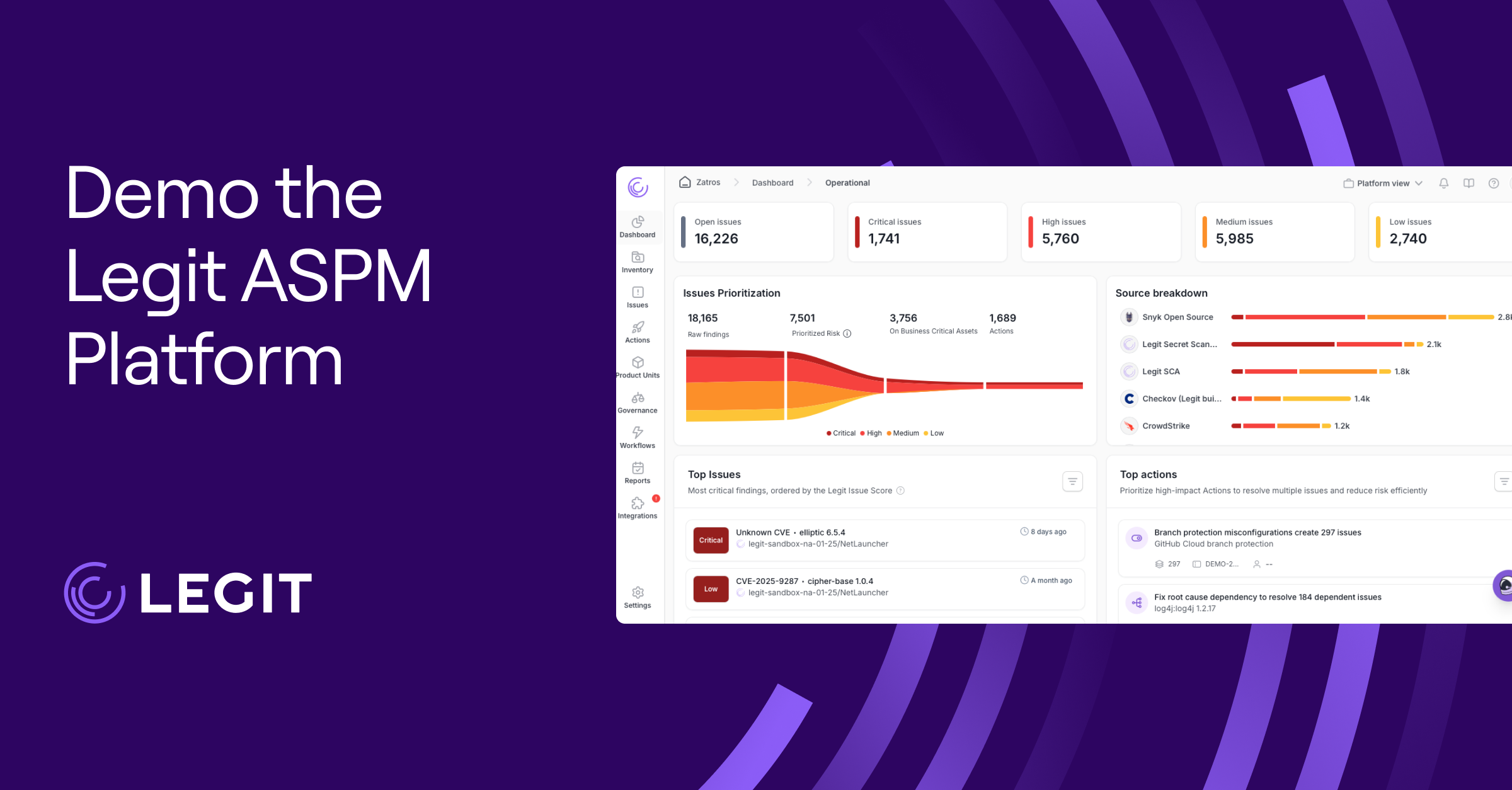Every software release carries the risk of exposing sensitive data or creating new entry points for attackers, and the cost of a breach can run into the millions. Securing applications early in the development reduces that risk and keeps issues from slipping into production.
Interactive application security testing (IAST) is designed for that reality. By monitoring applications in real time as they run, IAST shows you how code behaves and uncovers security vulnerabilities before attackers can exploit them.
What’s Interactive Application Security Testing (IAST)?
IAST is a modern security method that detects vulnerabilities from within the application while it’s running and executing. It commonly identifies:
- SQL injection: Unsafe query building that lets attackers modify database statements
- Cross-site scripting (XSS): Untrusted input rendered to the page without proper encoding
- Path traversal: File path handling that allows access outside intended directories
- Insecure deserialization: Unsafe object deserialization that can enable code execution or logic abuse
This interactive testing approach differs from static application security testing (SAST) or dynamic application security testing (DAST). Instead of analyzing code from the outside, IAST uses lightweight agents that instrument the application and observe its behavior during execution.
In practice, think of IAST as security testing from the inside out. By running within the application, it traces vulnerabilities back to the exact line of code, analyzes how data flows through the application, and even evaluates the security of open-source components when paired with software composition analysis (SCA).
Why Is IAST Important?
Your application moves fast, but you still need accurate security signals while your code is running. IAST gives you that context and uncovers issues as tests execute, including the code location, the state of the app, and the exact path that triggered the problem.
IAST also combines strengths you’d otherwise split across tools. By bringing together elements of SAST and DAST from inside the application, it covers more executed code paths and verifies a wider range of rules with greater accuracy than either approach alone.
In larger environments, these results can also feed into application security posture management (ASPM) programs to provide consistent visibility across your software development lifecycle (SDLC).
IAST Advantages
IAST makes it easier to find and fix vulnerabilities without slowing development in many ways. Here are some of the biggest advantages it offers:
- Delivers results in real-time: Because IAST observes applications as they run, it surfaces vulnerabilities immediately instead of after long scans.
- Focuses on executed code: Unlike static testing, which can flag unused or irrelevant code, IAST analyzes only what’s executed during functional or API tests.
- Pinpoints issues at the source: IAST links findings directly to the affected line of code or component, making remediation faster for developers.
- Supports modern architectures: Automated API and microservice tests integrate smoothly with IAST.
- Reduces false positives: With access to runtime data and configuration, IAST distinguishes between theoretical risks and exploitable vulnerabilities.
- Reuses existing test cases: Security checks run alongside functional tests, eliminating the need to create scripts for validation.
- Improves collaboration: By providing developer-friendly feedback directly in the integrated development environment (IDE) and other development tools, IAST shifts security left without slowing delivery.
How Does IAST Work?
IAST runs your application in a test environment and monitors what happens as you click through screens or run automated tests. A lightweight sensor from your IAST tool observes requests, data flow, and configuration while the app executes, then raises findings with the file, lines, and the exact test path that triggered them.
Example
Suppose you test a checkout flow. As a tester, you submit a form, and the sensor tracks where that input travels in code, which functions it touches, and whether validation occurs. If the data reaches a database call without proper sanitization, IAST flags likely SQL injection and shows the file, line, request, and test case that exposed it. This allows you to fix it while quality assurance (QA) is still running. Similarly, if sensitive data such as passwords or API keys is transmitted in cleartext, IAST detects the vulnerability and traces it back to the specific code implementation.
Setup
Setup is straightforward. Add the vendor’s sensor for your runtime, integrate it into your CI/CD pipelines, start the app in QA or continuous integration (CI), and exercise your APIs and user interface (UI) with the tests you already have. IAST reports on the parts of the app you execute and maps results directly to code so developers can move quickly to remediation.
Sensor Options
Vendors implement sensors in two main ways. Some use invasive instrumentation that you add to the code, which may require a separate test branch. Others attach non-invasively at the server runtime, so no source changes are necessary. Either way, the sensor observes real execution and sends findings to a dashboard for triage.
Operating Modes
You’ll encounter three operational styles: passive IAST, active IAST, and true IAST. Passive IAST listens while QA tests run, while active IAST uses a DAST scanner to generate traffic. True IAST goes further, with the scanner and sensor coordinating and reporting together. This last model can confirm issues with lower noise because both sides share context.
Scope and Environment
IAST focuses on executed paths. If a test does not touch a route or feature, the sensor won’t see it, so build coverage into your functional and API tests. Most teams run IAST in pre-production environments rather than live production to keep the feedback fast and safe.
Limitations and Trade-Offs
IAST adds precision at runtime, but there are a few practical restraints:
- Coverage depends on tests: IAST only reports on the code your tests exercise, so gaps in coverage can miss issues.
- Language and runtime support vary: Sensors target specific languages and frameworks, and some stacks may have limited support.
- Later than SAST in the SDLC: Because it needs a running app, feedback comes after the build, not at edit time in an IDE.
- Operational overhead: Adding and maintaining sensors across services introduces setup and upkeep in QA and CI.
How Is IAST Different From DAST and Other Security Testing Methods?
IAST is a gray-box, hybrid method that runs inside your app during testing. It observes real execution paths and ties issues to specific lines of code. DAST, by contrast, probes from the outside as a black box. It doesn't see source code, needs more test cases to build coverage, and usually can’t identify the exact line of code that failed.
SAST tools take the opposite approach. Static analysis testing scans code early and fast, but without runtime context, it often raises more theoretical findings. IAST trades some speed for that added context, which typically reduces false positives and makes fixes more direct.
SCA looks at third-party packages, not your custom code paths. If you’re weighing SCA versus SAST, they answer different questions: SCA flags known-vulnerable dependencies, while SAST inspects your own code patterns. IAST complements both by confirming issues only when the dependency or code executes during tests.
In practice, teams use them together. SAST gives early, broad coverage. IAST provides accurate runtime context. DAST covers external validation. SCA manages supply chain risk. Combined, they deliver complementary signals with fewer gaps.
Enhance Interactive Application Security Testing With Legit
Legit Security strengthens IAST security by connecting runtime findings to action across your entire pipeline. As an ASPM platform, Legit correlates IAST with SAST, DAST, SCA, and code scanning, prioritizes issues by business risk, routes fixes to the right owners, and tracks remediation. And it integrates with HCLTech AppScan and other security testing tools to provide unified visibility and prioritization across all findings.
Legit also extends protection to the software supply chain with repository discovery, secrets detection, and dependency risk tracking. It hardens CI/CD with policy-as-code, signer, provenance checks, and drift detection. The result is consistent guardrails from code to cloud, so you can secure your SDLC without slowing delivery.
Request a demo today to see how Legit transforms runtime findings into faster, risk-based remediation.
Download our new whitepaper.


